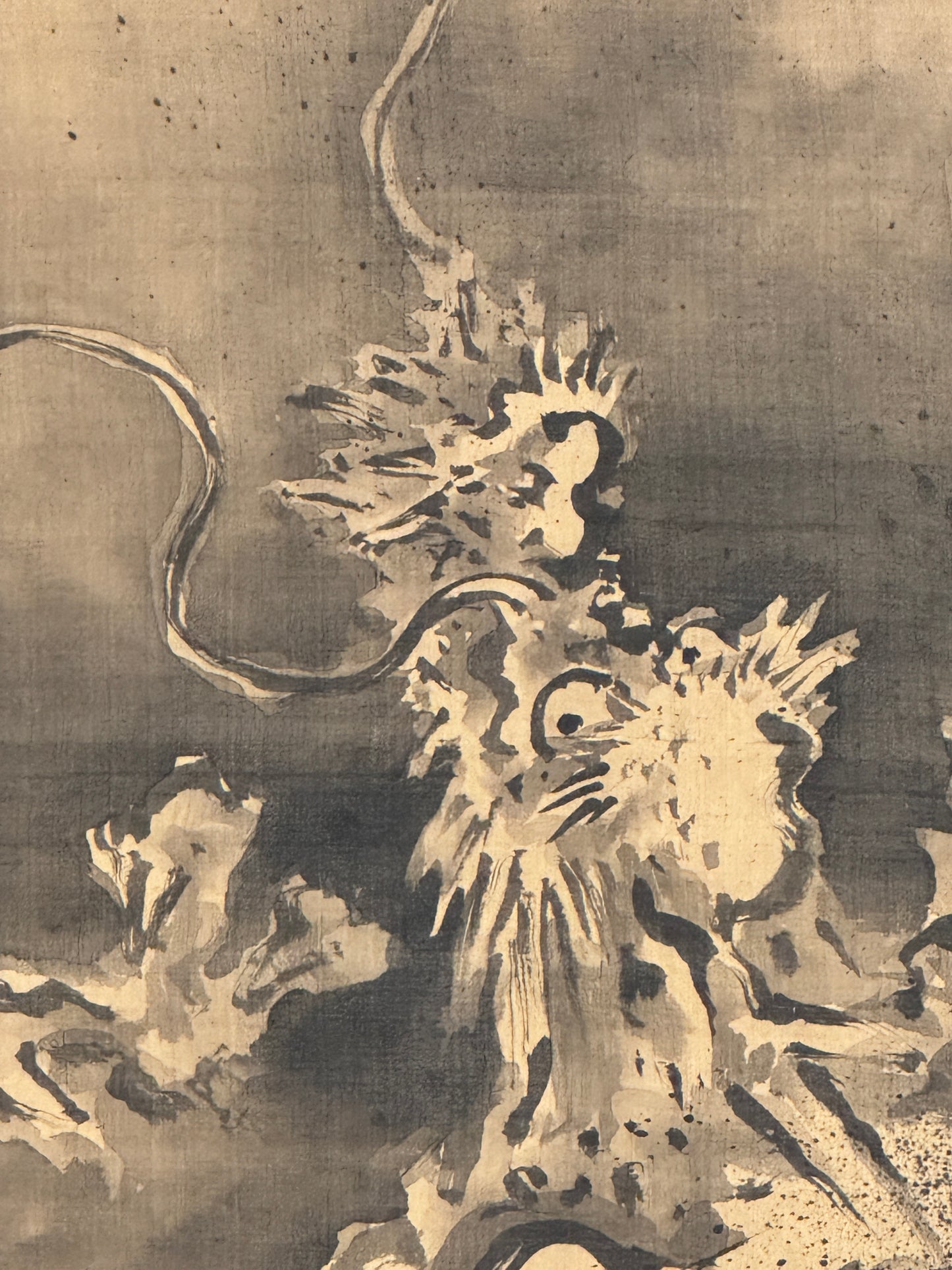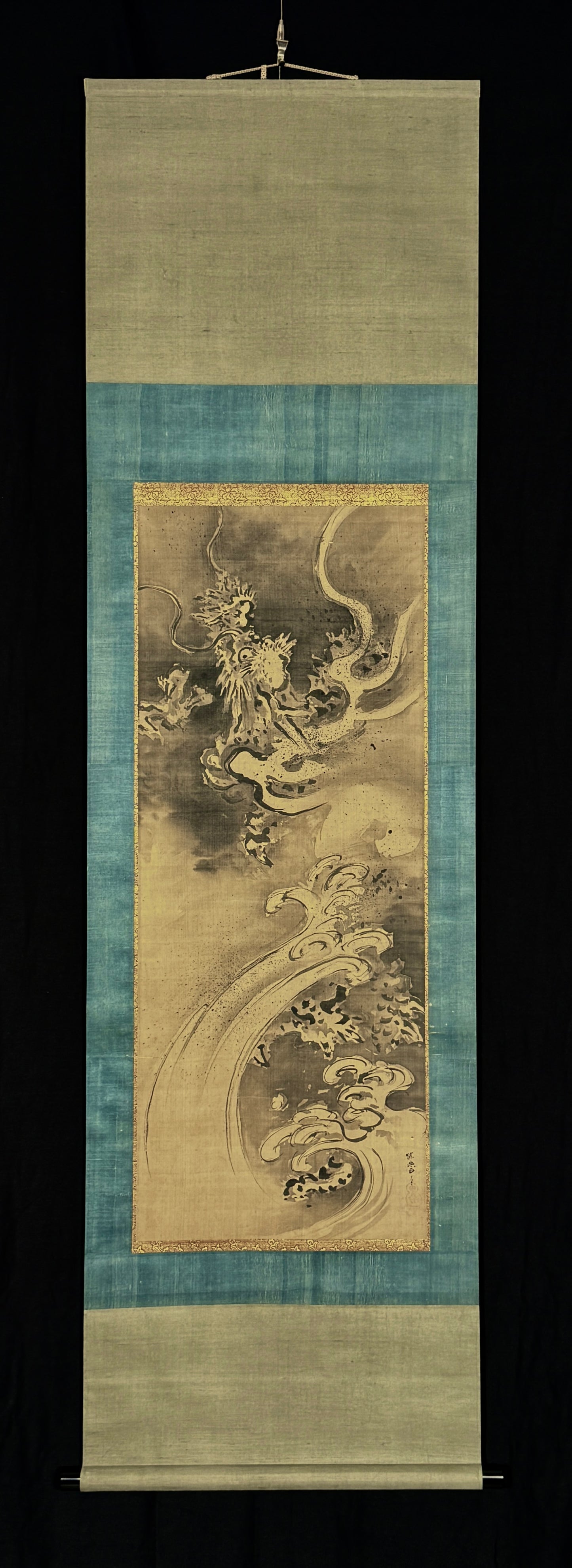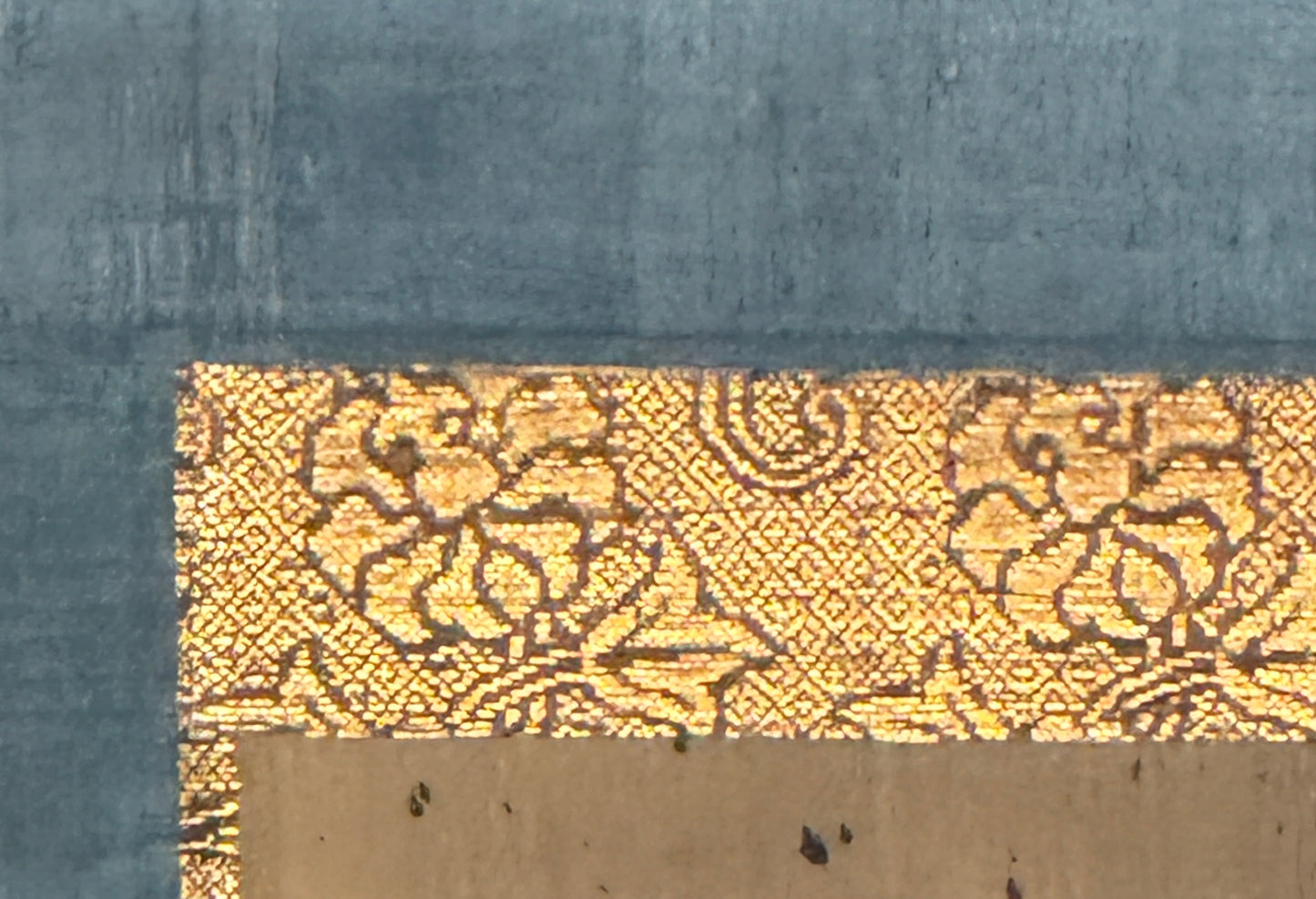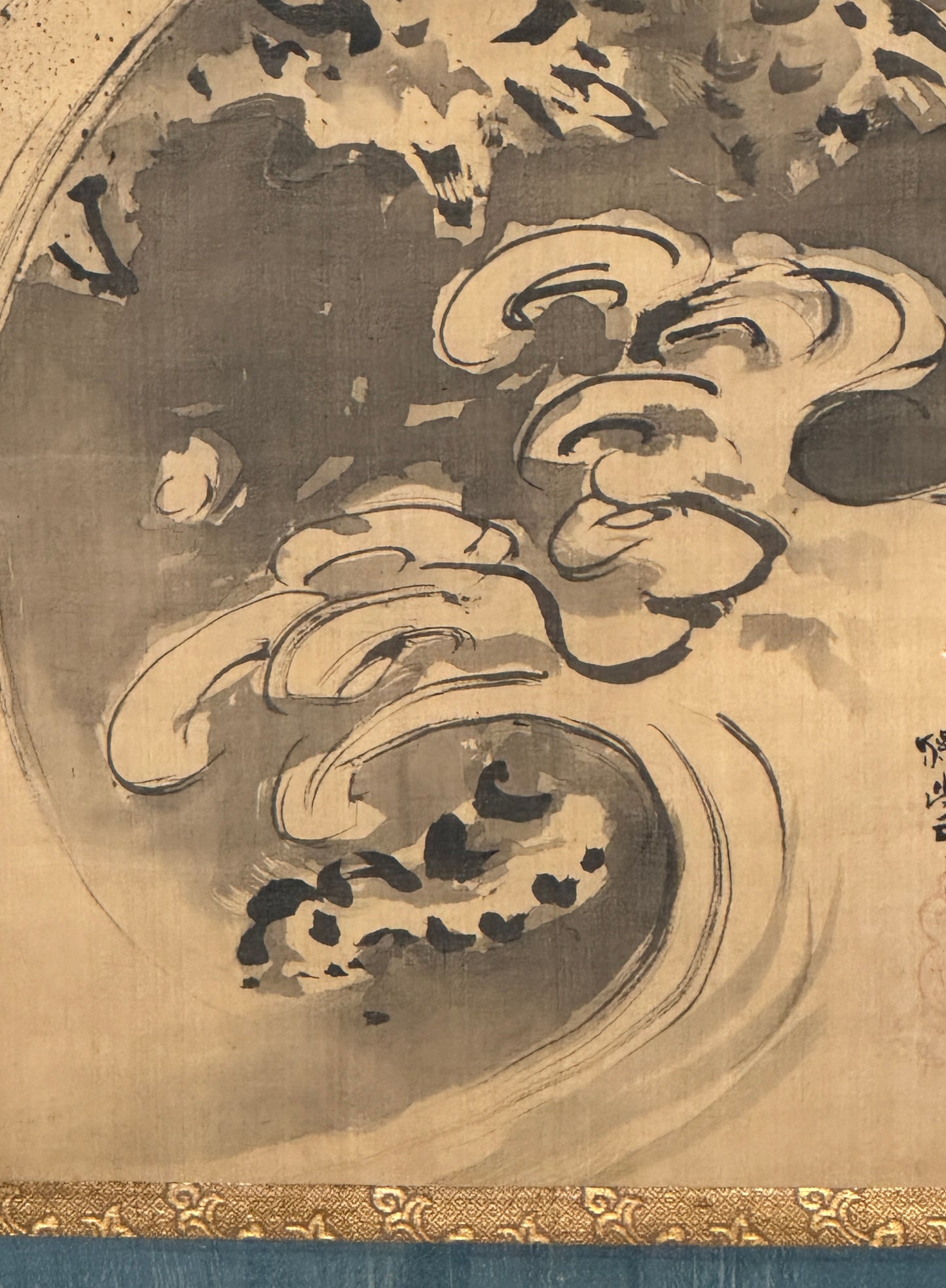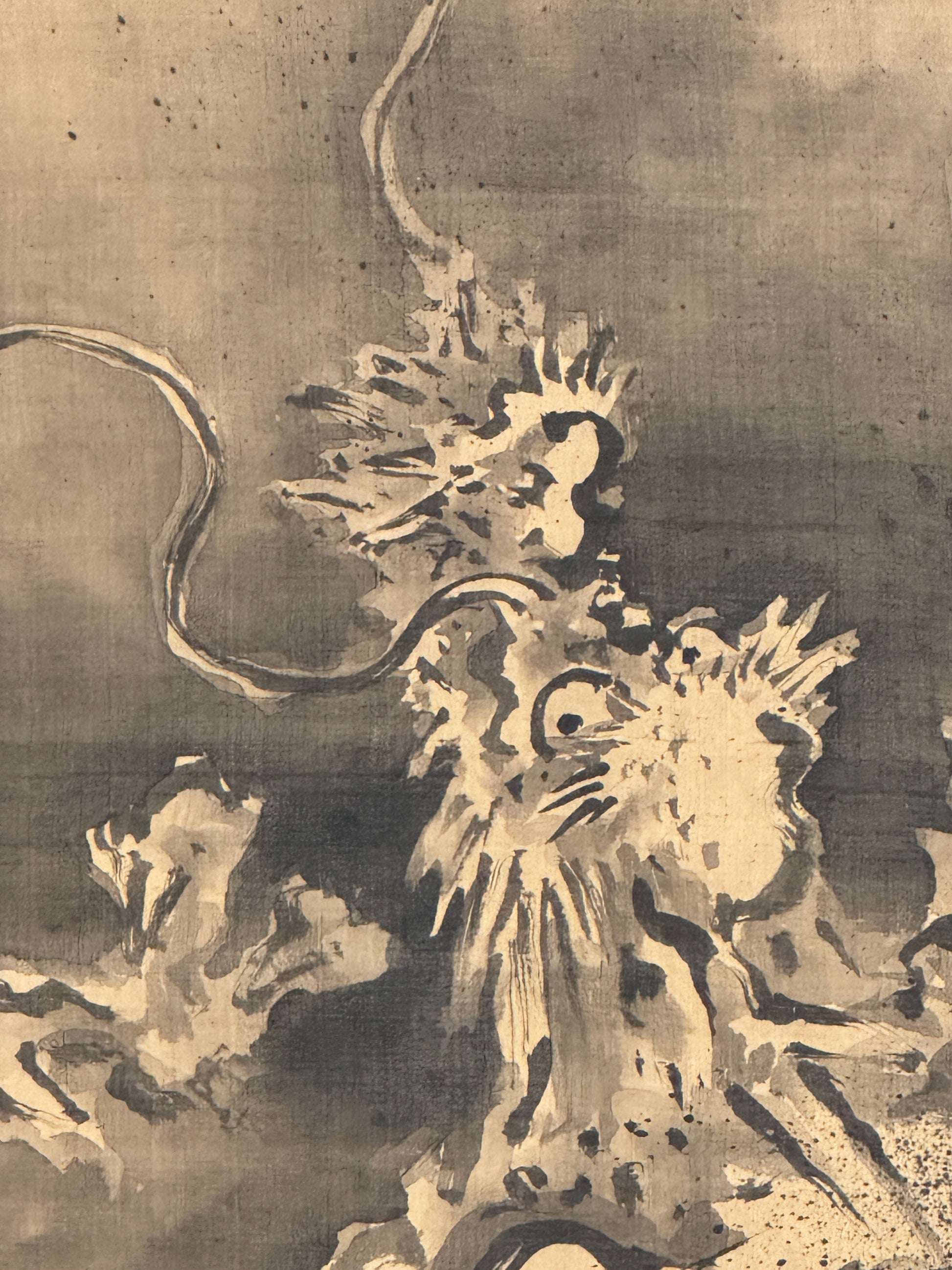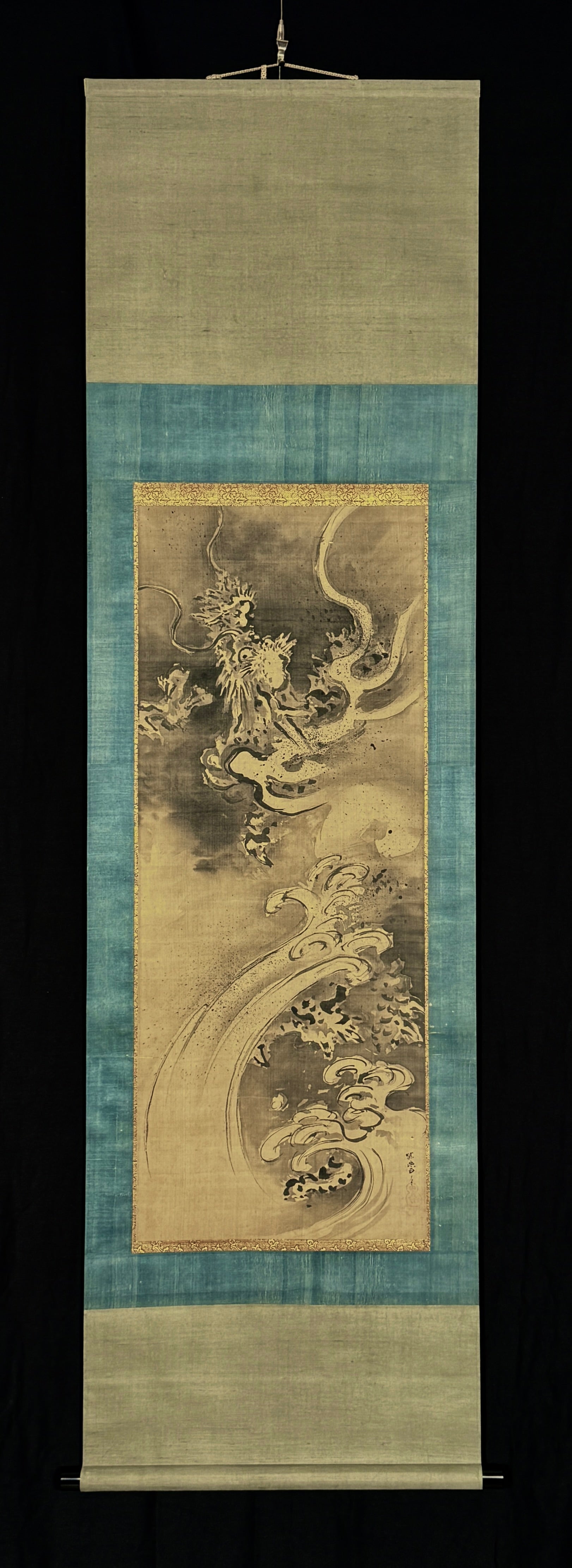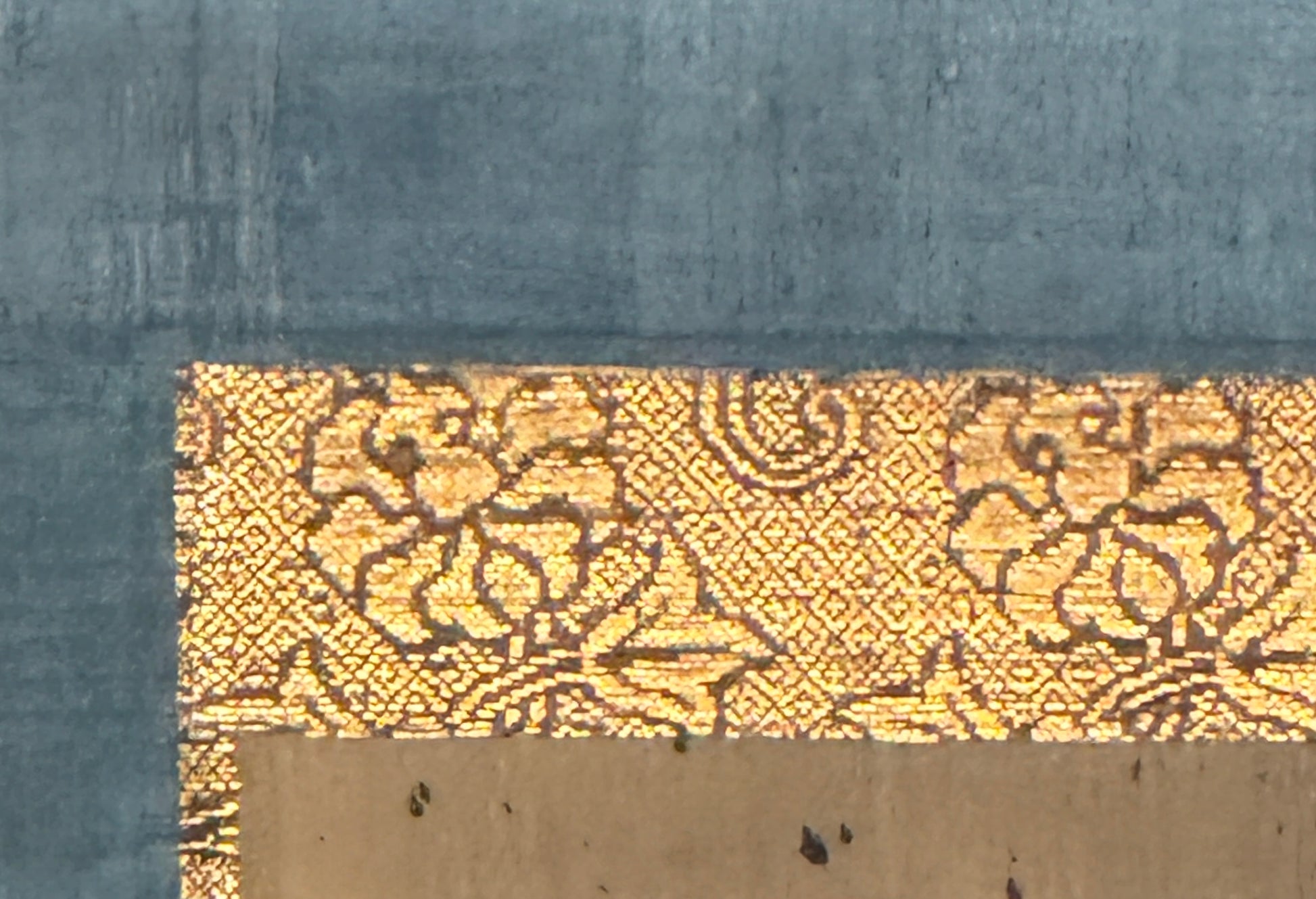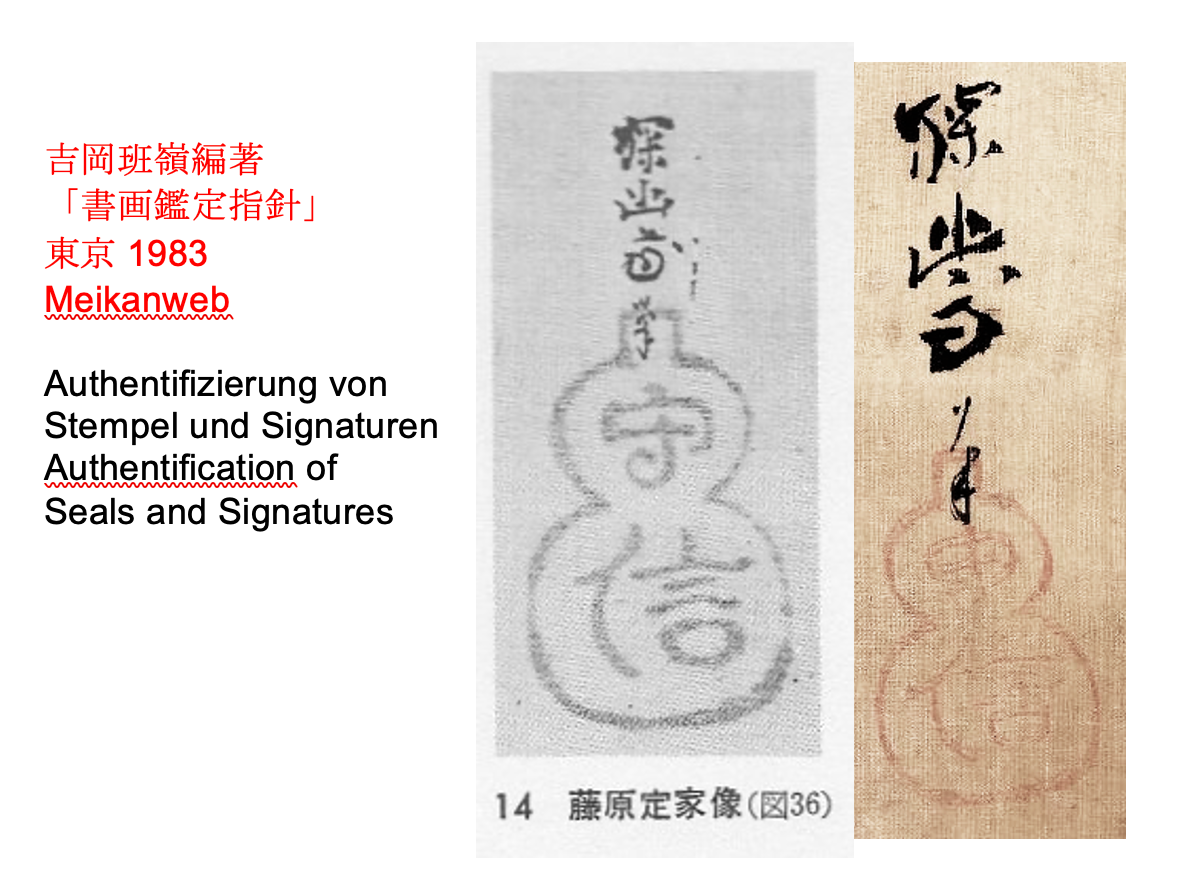Guignard Kyoto Collection
Dragon | Kanō Tanyū 狩野探幽 | 1602-1674
Dragon | Kanō Tanyū 狩野探幽 | 1602-1674
Couldn't load pickup availability
Kanō Tanyū began a new chapter in Japanese art history. He was born almost exactly at the beginning of the Edo period (1603-1867). In this period, neither the court nor the military aristocracy were leading in culture, but rather city dwellers with merchants and craftsmen increasingly determined the aesthetics in the arts. Since Tanyū, the Kanō school, which was the most important painting institution in Japan for centuries, cultivated various styles, because the Kanō school also now oriented itself towards the wide-ranging taste of the citizens because it was also economically dependent on this social class.
In this picture, Tanyū is still very much in keeping with the old ink painting tradition that was cultivated in the 15th and 16th centuries. Specific stylistic traces of the new era are hardly recognizable here.
The attitude towards dragons is very different in Asia than in Europe. In the West they are seen as terrifying fantasy monsters that eat virgins, but in Asia dragons are revered symbols of the sky. They are associated with water and clouds and, despite their appearance, are seen as good mythical creatures that do no harm to anyone.
This picture shows impressively how closely dragons are connected to water. At the base you can see foaming waves, but if you look more closely you can see that the shapes of the rippling waves are hardly distinguishable from the claws and scales behind them. If you immediately think that the dragon is only present in the upper half of the picture, you soon discover that it is rising from the waves, as is fitting for it. Kanō Tanyū painted a very similar dragon as a ceiling painting in the Daitokuji temple in Kyoto. The position of the head and the whiskers are almost identical. The shape of the waves is also amazingly similar to the waves of Tanyū's famous cormorant screen.
